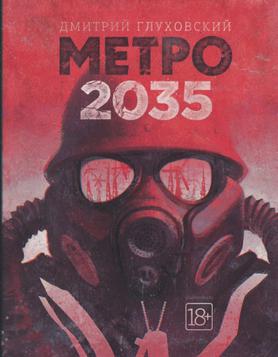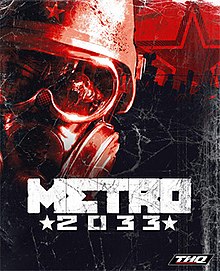Relic Entertainment Inc. is a Canadian video game developer based in Vancouver, founded in 1997. The studio specializes in real-time strategy games and is known for series such as Homeworld, Warhammer 40,000: Dawn of War and Company of Heroes. Acquired by THQ in 2004, the company was sold to Sega on January 22, 2013 as part of THQ's bankruptcy and operated under its European division. On March 28, 2024, Sega sold the company to an unnamed external investor.

S.T.A.L.K.E.R.: Shadow of Chernobyl is a first-person shooter survival horror video game developed by GSC Game World and published by THQ in 2007 following a long development. The game is set in an alternative reality, where a second disaster of mysterious origin occurred at the Chernobyl Exclusion Zone, causing strange changes in the area around it. The game features a non-linear storyline and includes role-playing gameplay elements such as trading and two-way communication with non-player characters.

TimeSplitters is a series of first-person shooter video games developed by Free Radical Design. The games are often considered spiritual successors to the Nintendo 64 titles GoldenEye 007 (1997) and Perfect Dark (2000), due to overlapping elements in gameplay, design, and development team. Each game features a time travelling element in which players battle across a diverse number of locations and periods in history.

GSC Game World is a Ukrainian video game developer temporarily based in Prague. Founded in Kyiv in 1995 by Sergiy Grygorovych, it is best known for the Cossacks and S.T.A.L.K.E.R. series of games. GSC Game World was the first company in Ukraine to localize PC games to the Russian language. In 2002, it became a publishing house, GSC World Publishing.

Cars is a 2006 adventure racing game published by THQ. The game is based on the 2006 film of the same name. It was released for the PlayStation 2, GameCube, Xbox, Microsoft Windows, Game Boy Advance, Nintendo DS, and PlayStation Portable in June 2006, with versions for the Xbox 360 and Wii released later that year. The Wii version includes functionality geared towards its Wii Remote controller and was a launch game for the system. Taking place after the events of the film, the game follows Lightning McQueen as he participates in the new racing season with his goal set on finally winning the Piston Cup. While doing so, he races and trains with the local community of Radiator Springs.

Sphinx and the Cursed Mummy is a 2003 action-adventure video game developed by Eurocom and published by THQ for GameCube, PlayStation 2, and Xbox. A version for mobile phones was released in 2004. THQ Nordic published a high-definition remaster for personal computer systems in 2017, and Nintendo Switch in 2019.

Dmitry Alekseyevich Glukhovsky is a Russian author, best known for the science fiction novel Metro 2033 and its sequels. As a journalist, Dmitry Glukhovsky has worked for Euronews, RT in its early years, and others. Aside from his native Moscow, Glukhovsky has also lived in Israel, Germany, and France. He currently lives abroad due to his wanted status and prison sentence in Russia for his criticism of the Russian government and the war in Ukraine.
Red Faction is a series of shooter video games developed by Volition and owned by Plaion. Originating in 2001, the Red Faction games have spanned Microsoft Windows, macOS and consoles, including the PlayStation 2, GameCube, Xbox, PlayStation 3 and Xbox 360. Original developers Volition have retained the rights to the series since 2020, with no updates provided on whether a future fifth game is in the works or may be so in the future.

WWE SmackDown vs. Raw 2010 is a professional wrestling video game developed by Yuke's and published by THQ for PlayStation 2 (PS2), PlayStation 3 (PS3), PlayStation Portable (PSP), Wii, Nintendo DS, Xbox 360, and iOS. It was released worldwide in October 2009, with the PS3 and Xbox 360 versions for Japan in January 2010. TOSE oversaw the development for the Nintendo DS version, which was the last installment to be released for the handheld. 2010 was also the first installment to be released as an iPhone app, launching on App Store on December 23 the same year.

MX Unleashed is a 2004 racing video game developed by Rainbow Studios and published by THQ for PlayStation 2, Xbox and mobile phones. The game is also backwards compatible for the Xbox One as of April 2018. It was also made free for Xbox Live Gold members in August 2020.

4A Games Limited is a Ukrainian-Maltese video game developer based in Sliema, Malta. The company was founded in Kyiv, Ukraine, in 2006 by three developers who departed from GSC Game World. In 2014, 4A Games moved its headquarters to Sliema, wherein the Kyiv office was retained as a sub-studio. The company is best known for developing the Metro video game series.

Metro 2033 is a 2002 post-apocalyptic fiction novel by Russian author Dmitry Glukhovsky. It is set within the Moscow Metro, where the last survivors hide after a global nuclear holocaust. It has been followed by two sequels, Metro 2034 and Metro 2035, and spawned the Metro media franchise. The book's English edition was published as a tie-in with its video game adaptation in 2010.

The 4A Engine is a graphics middleware engine developed by 4A Games for use in their video game Metro 2033, published by THQ. It supports Direct3D APIs 9 through 12, OpenGL 3.2, Nvidia PhysX, and Nvidia 3D Vision.

Metro: Last Light is a 2013 first-person shooter video game developed by 4A Games and published by Deep Silver. A sequel to the video game Metro 2033 and the second installment in the Metro series, its story follows Artyom, a young soldier living in the Moscow Metro after a devastating nuclear war. Tasked with finding the mysterious Dark Ones, Artyom must venture to different parts of the metro system, and the surface filled with radiated gases, and fight against different factions and mutated monsters. The game improves on various gameplay mechanics of 2033, and introduces elements such as weapon customization.
Metro is a post-apocalyptic fiction franchise consisting primarily of novels and video games that began with the 2005 release of Russian writer Dmitry Glukhovsky's novel Metro 2033. It was followed by his sequels Metro 2034 and Metro 2035, as well as by many other books by different authors, including Tullio Avoledo, Pierre Bordage, Robert J. Szmidt and Shimun Vrochek. Ukrainian studio 4A Games created the original novel's video game adapatation Metro 2033, followed by Metro: Last Light and Metro Exodus.
Video gaming in Ukraine began to emerge in the 1990s and is slowly growing. Subsequently, in the 2000s, several major video game series would start to appear.

S.T.A.L.K.E.R. is a first-person-shooter survival horror video game franchise developed by Ukrainian game developer GSC Game World. The series is set in an alternate version of the present-day Chernobyl Exclusion Zone in Ukraine, where, according to the series' backstory, a mysterious second Chernobyl disaster took place in 2006. As a result, the physical, chemical, and biological processes in the area were altered, spawning numerous nature-defying anomalies, artifacts, and mutants. The player takes the role of a "stalker" - a name given to trespassers and adventurers who have come to explore the exclusion zone and its strange phenomena.

Metro 2035 is a 2015 post-apocalyptic science fiction novel by Russian author Dmitry Glukhovsky. Glukhovsky's third book in the core Metro series, it serves as a sequel to Metro 2033 and Metro 2034. Like previous novels in the series, Metro 2035 is primarily set in the Moscow Metro and the ruins of Moscow itself in the aftermath of a nuclear apocalypse. 2035 follows Artyom, the protagonist of Metro 2033, as he attempts to make contact with other survivors in the world. Metro 2035 is partially inspired by the video game Metro: Last Light. In turn, Metro Exodus is a game loosely based on Metro 2035.

Metro Exodus is a 2019 first-person shooter game developed by 4A Games and published by Deep Silver. The game is the third installment in the Metro video game series, which is based on Dmitry Glukhovsky's novels. It is a sequel to Metro: Last Light and the book Metro 2035, and follows protagonist Artyom and his crew as they flee the Moscow Metro and set off with their allies on an intercontinental journey to the Far East on a locomotive called Aurora. The story takes place over a year, during which Artyom visits locations such as the Volga River and the Caspian Sea. The game improves on the gameplay mechanics of Last Light; it includes several miniature open world locations and has linear levels like earlier games in the series.

S.T.A.L.K.E.R. 2: Heart of Chornobyl is an upcoming first-person shooter survival horror video game developed and published by Ukrainian game developer GSC Game World. It will be the fourth game released in the S.T.A.L.K.E.R. video game series as well as the first S.T.A.L.K.E.R. game in 15 years since the release of Call of Prypiat in 2009.


















